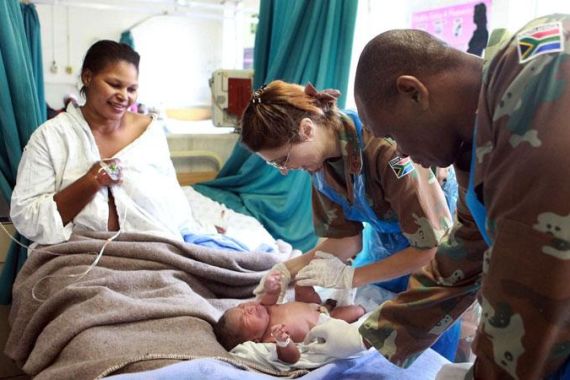Addressing South Africa’s poor healthcare
The government plans to take over 10 of the country’s academic hospitals in a bid to improve healthcare.

To understand why healthcare in South Africa is such a mess in some places you have to appreciate a little history.
In 1994 the country was divided into nine provinces. The Cape was split into three – the Northern, Eastern and Western Cape provinces. But most of the infrastructure and experienced clinicians were in and around Cape Town, and so, were absorbed into the Western Cape.
That left the Eastern Cape in particular with the scraps of a healthcare system it also had to mash together with the remnants of a former homeland administration (a very poorly resourced black territory). It was not a great start.
Things have definitely improved Nelson Mandela built hundreds of clinics in the rural areas and introduced an emergency service. Authorities have made great inroads in addressing cholera and HIV in particular but there are many challenges on many different levels.
At the grass roots level medical professionals I spoke to said there were frequent drug shortages, including of antiretroviral drugs which are used to treat HIV patients. They complained of feeling powerless.
One said she’d been submitting a budget for years that was completely ignored and described having to buy basic supplies like towels and strapping tape. Another said their clinic needed to get a business to donate a computer and printer.
They all said there was a complete lack of accountability – no one yelled down the phone when things went wrong. Their managers simply shrugged their shoulders.
It’s inevitable that leads to burn-out and a high staff turnover. While the government is now sending trainees to Cuba for medical studies, and offering bursaries for students who must then work in rural areas, the staff shortage is, quite frankly, staggering.
The province has about half the nurses and doctors it needs – what’s worrying is that it isn’t in the worst shape of all the provinces. According to the Institute of Race Relations, in data gleaned from the Department of Health, Limpopo has a doctor vacancy rate of 86 percent and the highest nurse vacancy rate at 68 percent.
Minister of Health Aaron Motsoaledi hopes that by taking over 10 of the country’s academic hospitals, it will be able to standardise training and speed up the hiring process. That may work in some of the poorly run hospitals where the minister says the provincial governments reassign money meant for healthcare to other services (like water and housing) but in a province like the Western Cape it’s another matter.
That province’s head of health says the government doesn’t have the skills or capacity to run its facilities Groote Schuur Hospital and Tygerberg Hospital. Both are very well-run already. Head of health professor Craig Househam has been speaking out this week against the plan which he describes as a mistake.
The impact of the takeover will be varied and that’s to be expected in a country where governance, access to healthcare and the quality of that healthcare vary immensely. But no one can argue with the central tenet of the health minister’s argument, that better quality healthcare has to be delivered to more South Africans, more of the time.